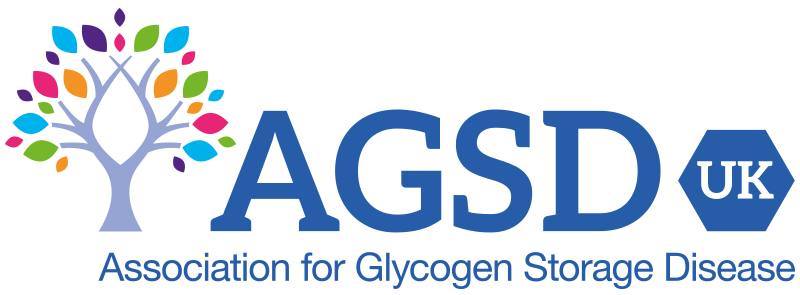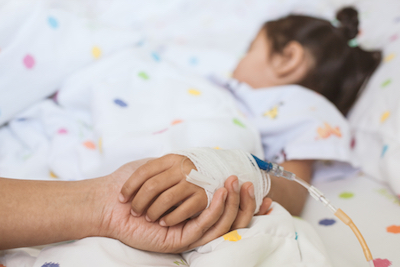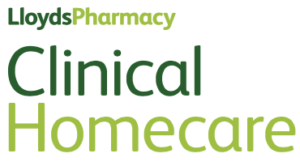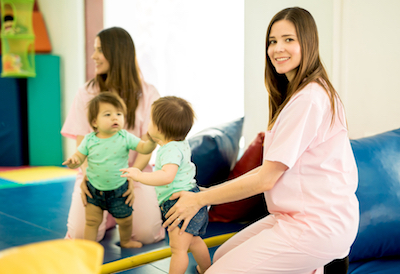In infantile-onset Pompe disease there is a complete lack of GAA enzyme, or such a small amount that it is undetectable. Symptoms appear in the first few weeks or months of life.
Enzyme Replacement Therapy
The only treatment available for any form of Pompe disease involves giving a manufactured, replacement enzyme. This aims to help the body process glycogen and reduce build-up in the lysosomes. This is called Enzyme Replacement Therapy. Myozyme is the brand name of the only licensed treatment commercially available in the UK.
![]() Myozyme comes under the Orphan Drug Act, read about it on Orphanet.
Myozyme comes under the Orphan Drug Act, read about it on Orphanet.
This is a lifelong treatment given every one or two weeks. The dose is based on a person’s weight. It is given directly in to the blood stream. This requires a needle to be inserted in to a vein.
The first infusions are given in hospital and are closely monitored. Blood and urine samples will be taken and checked. The whole process, from start to finish can take several hours. The infusion is given slowly, partly to help avoid an allergic reaction.
With ERT a child should start to show some progress and experience fewer symptoms but it is possible they might still have some muscle weakness.
Babies started having ERT from about 2006 and we now have children living in to their teens because of it. These young people are the first to survive and give everyone great hope.
Reactions to ERT
For babies who have no natural GAA enzyme (or almost none) there is a risk that their bodies natural immune system will try to reject the artificial enzyme and treat it like a stranger in the same way as it does a cold or ‘flu bug. This is because anti-bodies are being produced. The technical term for this is Cross Reacting Immune Material or CRIM. A baby that is reacting to the enzyme replacement therapy is called CRIM Negative. In these babies this causes the treatment to be ineffective so some children might be given ‘immune modulation’. Immune modulation uses one of a number of drugs to suppress the immune response of the body, hoping that it will then allow the replacement enzyme to work effectively and not be rejected.
A small majority of babies are CRIM positive. Because they have a tiny but detectable amount of the GAA enzyme, their body should not reject the treatment.
Allergic reactions can occur to the Enzyme Replacement Treatment (ERT) so sometimes a medicine is given before the infusion takes place. These allergic reactions include symptoms such as high temperature, skin rash or vomiting. Medical staff will be watching out for this. All parents and carers also continue to monitor for allergic reactions throughout treatment.
Daily life with ERT at home
Myozyme has only been an accepted treatment for about a decade so research in to its effectiveness continues.
There is also some debate about whether a higher dose or a more frequent dose would improve life for a child with infantile-onset Pompe disease.
Children in the UK with infantile-onset Pompe disease now have their ERT infusion outside the hospital once they are discharged to their home.
Our children with infantile-onset Pompe disease in the UK have ERT at nursery, school and home. It becomes a regular routine that everyone has got used to.
Home care companies are employed by the NHS to deliver these treatments outside hospitals. They employ highly-skilled nursing staff to give home-based ERT. At the moment there are two companies in the UK giving this service. One is Healthcare at Home Ltd and the other is Lloyds Pharmacy Clinical Homecare Ltd. They welcome contact from families with queries about how ERT can work for them in their home. Your medical team can help make contact.
Homecare - options for Reduced Support Infusions
Your Specialist NHS Team might offer you “reduced support infusions” for you, or your child, so that you need to rely less on support from the homecare nurse.
There are two options that you may be asked to consider:
- Semi-independent infusions meaning that a nurse will order the drug and ancillaries and visit your home to start the infusion. She will reconstitute all of the drug, cannulate (insert the needle) and initiate the pump. Once the infusion is running the nurse will leave you to finish the rest of the treatment and to remove the needle when finished.
- Totally independent infusions meaning that you would be trained over a period of weeks and months to give yourself the infusions; a partner or caregiver might perform the cannulation for you. When you have become fully competent, you would be involved with ordering your drug supplies and ancillaries, and no nurse would need to visit your house. You, or your caregiver, will mix the enzyme, cannulate, initiate, and stop the infusion.
In each case full telephone support will be given by your homecare company.
Nobody should be coerced to accept reduced support infusions against their will. Some people prefer the totally independent infusions because they give them flexibility about when and where they have their treatment.
If this raises any concerns or questions for you then contact us to be put in touch with people who have tried infusions both ways, so that you can get the full picture.
Further treatments
Other treatments that might be considered include;
- Help with breathing during the night using a mask over the nose or face with a pump (non-invasive ventilation).
- Extra oxygen through the day or the night.
- A stomach tube to help feeding through the night and sometimes the daytime too (often called a PEG).
- A permanent implanted device to enable easier ERT such as an inserted catheter or ‘port’.
All of these can seem a frightening prospect, however, families soon get used to them and make them part of life.
Further specialists to advise
A physiotherapist will assess how your child is physically developing and offer guidance about how to help them improve their walking and other motor skills (movements such as gripping, sitting or turning). In one of the Highly Specialised Paediatric Centres you will see a neuromuscular specialist physiotherapist who understands infantile-onset Pompe disease. After assessment they are likely to refer you to a more local therapist for regular sessions. You will also be asked to do some physiotherapy at home as well.
Some children develop a curved spine called scoliosis that requires a brace or surgery. Others use a leg brace to support walking and some use a wheelchair all or part of the time. The physiotherapist will monitor this over time.
A Speech and Language Therapist will help support your child with their breathing, eating, swallowing and speaking. They might conduct tests such as videofluroscopy which monitors swallowing. A child’s weakened muscles can sometimes lead to problems with swallowing and so this is closely watched. Mis-swallowing can cause other serious complications and infections.




